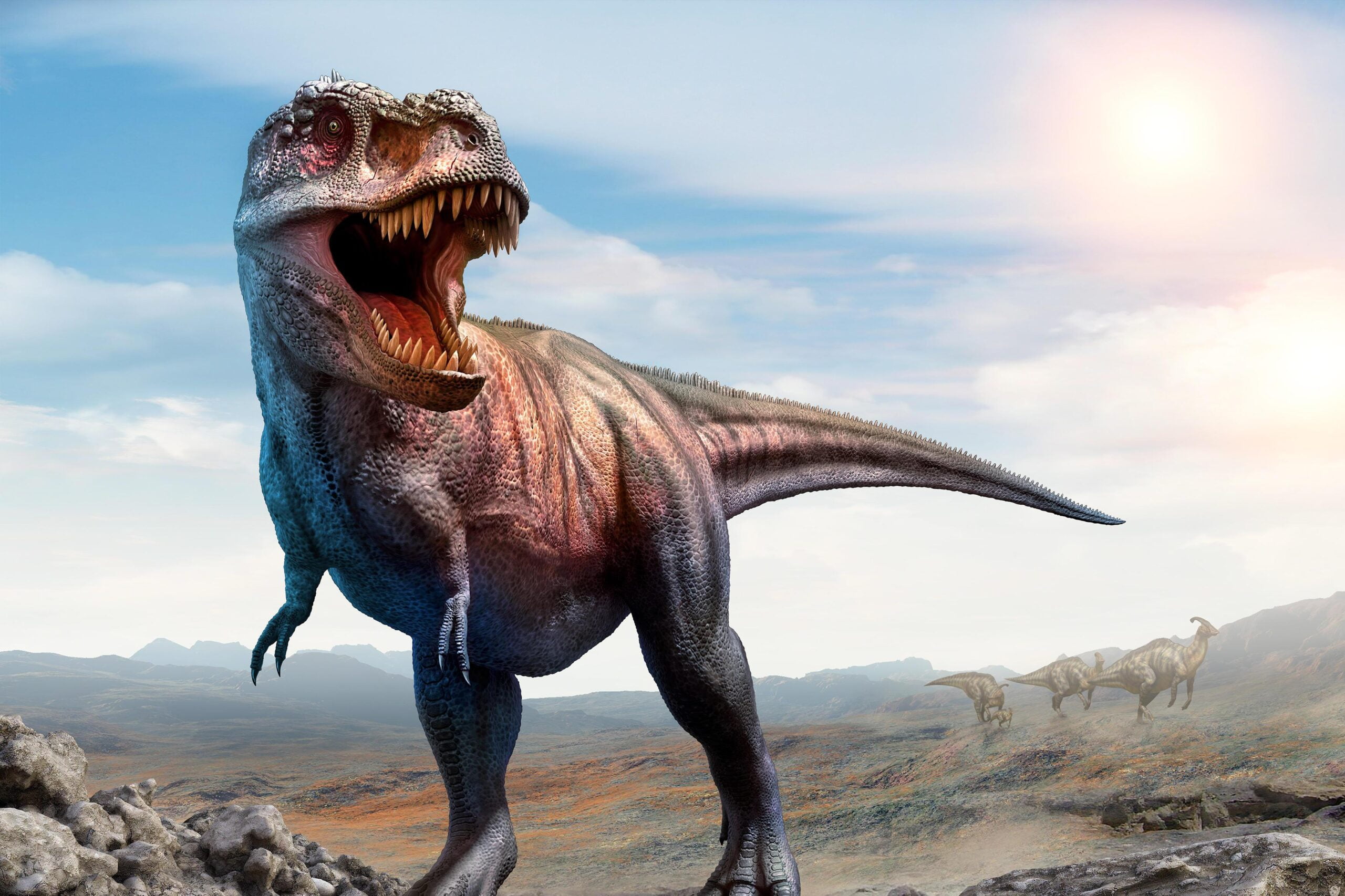The Best Ten Dinosaur Revelations of 2022

The surge of dinosaur disclosures this year was difficult to stay aware of. New species packed logical diary pages as specialists distributed many investigations that gave new bits of knowledge into the science, conduct and annihilation of the “horrible reptiles.” We filtered during this time’s top fossil science disclosures and debates to pick ten stories that address how we might interpret dinosaurs has changed and what the next few years could reveal. Following Smithsonian’s yearly practice, here are 2022’s top dinosaur revelations and discussions.
A dinosaur mummy was safeguarded after openness to the components
Here and there scientistss find dinosaurs with impressions of their skin or other delicate parts flawless. As of not long ago, such fossils have been viewed as instances of “outstanding conservation” when residue quickly covers the dinosaur before foragers can start taking apart the body.
Yet, another investigation of the hadrosaur mummy nicknamed “Dakota” invalidated this exemplary thought. The dinosaur, an example of Edmontosaurus, gives indications that the body was presented to scroungers and the components for weeks or months in the afterlife. Getting an opportunity to dry out may really have helped protect the subtleties of the dinosaur’s skin. Tyceratops – OnlyFans User
Cushy coats assisted dinosaurs with flourishing
Around quite a while back, well before a huge space rock struck the Earth, dinosaurs really profited from a mass termination. The devastating occasion drove many types of reptiles to elimination — family members of crocodiles and different saurians that filled a considerable lot of Earth’s environments — and made a biological hole for dinosaurs to multiply, increasing and more assorted than any other time.
Fantastic volcanic overflows quickly changed the World’s environment, causing a short worldwide winter that added to the fourth of our planet’s mass eradications. Many types of reptiles died, particularly the far off family members of the present gators and crocodiles, yet dinosaurs endured practically sound.
A review distributed for this present year recommends dinosaurs developed in cooler environments, and their mix of warm internal heat levels and protecting layers of padded cushion permitted them to endure what numerous different reptiles proved unable. On the off chance that this speculation is right, sometime scientistss ought to track down direct proof of fluffy covers on even the earliest dinosaurs.
Researchers tussled over tyrannosaurs
For more than a long period, Tyrannosaurus rex has remained solitary. Regardless of infrequent ideas in actuality, scientistss have perceived just a single types of Tyrannosaurus. This year, be that as it may, one review reached an alternate resolution. Refering to elements of the skull, the paper suggested that scientistss have really found two other Tyrannosaurus species notwithstanding rex — named T. regina and T. imperator.
Outside specialists immediately nixed the thought, nonetheless, saying the proof refered to is entirely factor among people and that such minor contrasts are better perceived as varieties in a solitary animal groups, T. rex itself. In the event that other Tyrannosaurus species anticipate revelation, they should pass a high bar for acknowledgment by specialists.
A minuscule furnished fear entered the scene
T. rex wasn’t the main dinosaur with squat arms. Consistently, huge meat eating dinosaurs developed to have somewhat short forelimbs — including another types of carcharodontosaur portrayed for this present year called Meraxes.
The common life systems indicates that being a meat-eater with a major head drove dinosaurs like Meraxes to develop a comparative body plan to T. rex, with little arms that could be kept far removed of battling prey.
All the more critically, in any case, the skull and skeleton of Meraxes are more totally known than those of related dinosaurs like Giganotosaurus. By contrasting the known remaining parts of Giganotosaurus, Tyrannotitan and related dinosaurs to Meraxes, scientistss can more readily appraise the body sizes and physical points of interest of these dinosaurs.
Dinosaurs probably ran hot and cold
Were non-avian dinosaurs warm-blooded like birds and vertebrates? Or on the other hand would they say they were unfeeling, in the same way as other current reptiles? The response isn’t straightforward, and it might try and be “a touch of both.” Scientistss are as yet exploring the physiology of the different cluster of dinosaurs that blossomed with our planet during the Triassic, Jurassic and Cretaceous.
One review distributed for this present year proposes that it’s anything but a one-size-fits-all response. While theropod and sauropod dinosaurs showed proof of endothermy, or keeping up with raised internal heat levels, the ornithischian dinosaurs —, for example, horned, heavily clad and duckbilled dinosaurs — showed signs that they ran cooler.
Different investigations have concocted clashing outcomes, nonetheless, which just demonstrates that inquiries into how dinosaurs were such dynamic, quickly developing and dynamic creatures stay open.
A shielded conundrum was found
A few dinosaurs cause scientistss to do a twofold take. This year, one that got their attention was Jakapil, a reinforced dinosaur whose genuine character is as yet being bantered by specialists. The little animal, found in the Cretaceous rocks of Patagonia, was depicted by certain scientistss as a defensively covered dinosaur having a place with a similar wide family as Stegosaurus and Ankylosaurus, however addressing a crude branch-off that in some way made due for a huge number of years surprisingly lengthy. Different analysts clash.
The known remaining parts of Jakapil are excessively not many to tell the dinosaur’s actual personality, they fight, and Jakapil could really be a reinforcement covered horned dinosaur or maybe address a formerly obscure gathering of dinosaurs. No conclusive response not entirely set in stone yet, yet every one of the potential responses have entrancing ramifications for how dinosaurs were developing close to the furthest limit of the Cretaceous.
Contingent on what future exploration finds, Jakapil may be a remnant from the beginning of defensively covered dinosaur development, proof that horned dinosaurs developed shield coats, or a sign that a whole group of obscure dinosaurs anticipates disclosure.
Researchers find puzzling megaraptors were connected with tyrannosaursPaleontologists are continually modifying the dinosaur genealogical record. Each new species changes the image a smidgen, and it can require years — in the event that not many years — to sort out the state of dinosaur connections. Think about Maip. This savage dinosaur was named from the Late Cretaceous rocks of Argentina in 2022 and was ordered as a megaraptorid.
However, what is a megaraptorid, precisely? Specialists are ceaselessly puzzled by that inquiry, however the life systems of Maip — alongside other megaraptorids — hint that these dinosaurs were direct relations of the more prominent tyrannosaur family. Inconspicuous physical subtleties of the new dinosaur’s ribs and vertebrae look like those of early tyrannosaurs more than different gatherings of flesh eating dinosaurs, indicating that Maip imparted a nearer normal progenitor to any semblance of T. rex than different hunters like Allosaurus.
That would put the beginning of the megaraptorids back in the center of the Jurassic, giving scientistss new hints about how to look for additional dinosaurs from this inadequately figured out family.
Plant-eating goliaths made delicate strides
The biggest creatures to at any point stroll ashore were sauropod dinosaurs, or long-necked herbivores like Apatosaurus and Patagotitan. Yet, how did these plant-eaters get so huge? Different parts of sauropod science probably opened the potential outcomes of genuinely colossal size — including cushioned feet.
Another review distributed for the current year utilized designing strategies to concentrate on sauropod feet. Without padded cushions, the scientistss found, the bones of these dinosaurs would probably part from the pressure of strolling. The dinosaurs probably had padded feet, and the advancement of this component right off the bat in the gathering’s set of experiences opened the chance of increasingly large sizes over the long haul.
Undeveloped organisms wrapped up close
This story broke late in 2021, after we distributed our last yearly rundown. A carefully protected dinosaur incipient organism still inside the egg demonstrates that some non-avian dinosaur infants “tucked” their heads under their arms similarly as inside their eggs.
The find implies that the manner in which birds foster inside their eggs was acquired from their previous dinosaur precursors and will assist paleontologists with better deciding the formative phase of other fossil undeveloped organisms.
Researchers uncovered a swimming, plunging dinosaur
Dinosaurs strolled the earth, and some flew in the air, yet scientistss have long asked why no non-avian dinosaurs appeared to have bodies appropriate for swimming. The response, it ends up, is that scientistss simply hadn’t tracked down them yet. Under a month prior, scientistss declared the disclosure of Natovenator, a little and nearly duck-like dinosaur that lived in the Cretaceous of what’s presently Mongolia.
Among other obvious elements, the ribs of this raptor relative are cleared back similar as those of jumping birds like auks and penguins that carry on the dinosaur heritage today. Natovenator, the specialists propose, was a semi-oceanic tracker that swam after fish and other dangerous prey. A few dinosaurs truly were worked for the water, all things considered.
Read Also: Katiana Kay – The Biography






